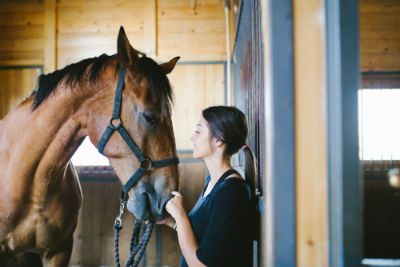
Horse training is no easy feat; it takes patience, dedication, and skill. However, there is no denying that the process, although arduous at times, is extremely rewarding in the long run.
Below are a few tips for mastering the basics of horse training.
Start early
The younger the horse, the more effective the training will be. This is because a young horse will develop trust in their trainer much more quickly, getting your relationship off on the right foot (or rather, hoof). Begin by getting the foal used to leading and haltering, and spend as much time with them as possible.
Just remember to keep training low-key and to allow for plenty of breaks and rest in between. Young horses do not have even nearly the same level of stamina as a full grown one. With this in mind, you will want to aim for a maximum of about 20 minutes twice a day.
Take responsibility
Do not take training a horse lightly, as this is a huge responsibility, and should be treated as such. After all, what you teach the young horse now will serve as a foundation for all of its behaviors and abilities in the future.
Take the natural horsemanship approach
There are various approaches to training a horse, regardless of their age. However, many professionals will agree that the natural horsemanship approach is undoubtedly one of the most effective. Natural horsemanship refers to five basic concepts and is essentially psychology-based. These five concepts include:
- Approach and retreat: this refers to the initial phase of training where a horse may feel afraid or unsure about certain aspects of the process, such as being saddled. It is based on moving toward the horse, and upon noticing its unease, stopping and retreating a bit before moving forward again once the horse has calmed, and repeating until the goal has been reached.
- Pressure and release: this basically refers to leading the horse without forcing If they show resistance at any time, pressure should be maintained on the rope without pulling, and released only once the horse takes a step in the right direction.
- Rewards and consequences: this concept is fairly self-explanatory.
- Desensitization: most horses will naturally react quite violently to specific types of stimuli – loud noises in particular. Desensitization is all about training the horse not to react in a negative way to these stimuli. Ultimately, it is about building confidence.
- Foundation training: trainers practicing natural horsemanship training will know that a solid foundation is imperative if the horse is to build on their talents and aptitude in the future. Foundation training seeks to teach the horse all about the basics and generally lasts around six weeks.
Enjoy it
Having the chance to be around horses on a regular basis and to witness a young horse progress is a wonderful privilege, and not something that many people are lucky enough to experience. So, be present, be patient, and savor every moment of the incredible unfolding journey.










